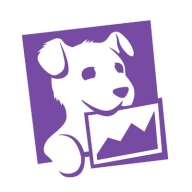


Find out what your peers are saying about Datadog, Dynatrace, Splunk and others in Application Performance Monitoring (APM) and Observability.
ROI is hard to specify; however, incidents like impending ransomware attacks highlight its value, though those are exceptional events.
They have a good reputation, and the support is commendable.
Issues that could be solved quickly sometimes take longer because they go around in circles.
If it's an enterprise, increasing the number of instances doesn’t pose problems.
Generally, all are stable at ninety-nine point nine nine percent, but if the underlying infrastructure is not deployed correctly, stability may be problematic.
The documentation is adequate, but team members coming into a project could benefit from more guided, interactive tutorials, ideally leveraging real-world data.
There should be a clearer view of the expenses.
The definition of enterprise is loosely used, however, from a holistic security perspective, including infrastructure, network, ports, software, applications, transactions, and databases, there are areas lacking, especially in network monitoring tools.
Email alert customization is limited; it cannot be tailored much, which makes the system more rigid than optimal.
The setup cost for Datadog is more than $100.
Our architecture is written in several languages, and one area where Datadog particularly shines is in providing first-class support for a multitude of programming languages.
The technology itself is generally very useful.
Graduation features offered by Dynatrace provide a single view and can connect with many other monitoring systems.
Using New Relic speeds up troubleshooting and resolution, giving us a clearer picture of where issues are, thus saving time and effort.



Datadog is a comprehensive cloud monitoring platform designed to track performance, availability, and log aggregation for cloud resources like AWS, ECS, and Kubernetes. It offers robust tools for creating dashboards, observing user behavior, alerting, telemetry, security monitoring, and synthetic testing.
Datadog supports full observability across cloud providers and environments, enabling troubleshooting, error detection, and performance analysis to maintain system reliability. It offers detailed visualization of servers, integrates seamlessly with cloud providers like AWS, and provides powerful out-of-the-box dashboards and log analytics. Despite its strengths, users often note the need for better integration with other solutions and improved application-level insights. Common challenges include a complex pricing model, setup difficulties, and navigation issues. Users frequently mention the need for clearer documentation, faster loading times, enhanced error traceability, and better log management.
What are the key features of Datadog?
What benefits and ROI should users look for in reviews?
Datadog is implemented across different industries, from tech companies monitoring cloud applications to finance sectors ensuring transactional systems' performance. E-commerce platforms use Datadog to track and visualize user behavior and system health, while healthcare organizations utilize it for maintaining secure, compliant environments. Every implementation assists teams in customizing monitoring solutions specific to their industry's requirements.
Dynatrace is an AI-powered software intelligence monitoring platform that accelerates digital transformation and simplifies cloud complexities. Dynatrace is an entirely automated full-stack solution that provides data and answers about the performance of your applications and deep insight into every transaction throughout every application, including the end-user experience. By modernizing and automating enterprise cloud operations, users can deliver an optimal digital experience with higher quality software to customers faster.
Dynatrace offers an all-in-one automated artificial intelligence solution that brings together application performance, cloud and infrastructure, and digital experience monitoring. Dynatrace accelerates performance-driven results through operations, development, and business teams with a shared metrics platform. In addition, users are provided a full-stack monitoring experience with three patented technologies:
What does Dynatrace offer?
Dynatrace redefines how organizations monitor their digital ecosystems. The solution offers:
Reviews from Real Users
Dynatrace is the only solution that provides answers to organizations based on deep insight into each user, transaction, and organization's environment.
Barry P., a managing performance engineer at Medica Health Plans, writes, "With Dynatrace, we have synthetic checks and real-user monitoring of all of our websites, places where members and providers can interact with us over the web. We monitor the response times of those with Dynatrace, and it's all integrated into one place."
A consultant at a tech service company notes, "A feature that's one of the highlights of Dynatrace is the AI. The second most valuable feature is OneAgent. Between infrastructures, applications, operating systems, you can deploy with just a single agent and can practically install and forget about it."
New Relic is a powerful tool for optimizing web pages, tracking user behavior, and monitoring application performance. It helps detect anomalies, generate metrics, and create dashboards for synthetics monitoring, container workloads, stress tests, and more.
New Relic provides organizations with comprehensive insights into APIs, infrastructure, and scalability. It supports mobile and web applications with features like java tracking, health maps, customizable dashboards, and drill-downs. Users benefit from its easy initial setup, accurate alerts, UI monitoring, error tracking, and traceability. New Relic supports multiple ecosystems with straightforward pricing and new feature introductions, offering end-to-end monitoring, thorough data analysis, and effective problem resolution.
What are New Relic's most important features?New Relic is leveraged in industries such as e-commerce, finance, and technology. It helps monitor web traffic, evaluate load balancing, and ensure applications meet performance standards. Companies use it for stress tests, container-based workloads, API monitoring, and infrastructure management. Its integration capabilities are valuable for maintaining performance and scalability across diverse ecosystems, aiding in thorough data analysis and problem resolution.